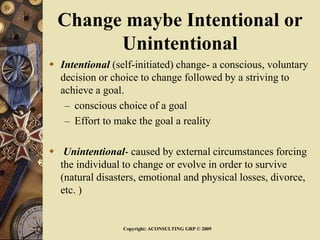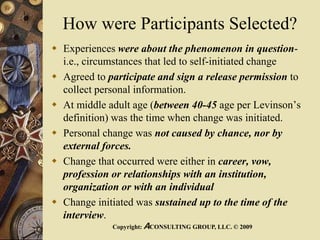The document explores personal transformation processes in adulthood, illustrating how individuals initiate change intentionally or unintentionally, often influenced by complex life circumstances. It also examines key themes, outcomes, and lessons learned from these transformative journeys, emphasizing the importance of support networks and self-reflection. Additionally, the findings suggest implications for organizational transformation, highlighting how environments can foster creativity and innovation among employees.
































